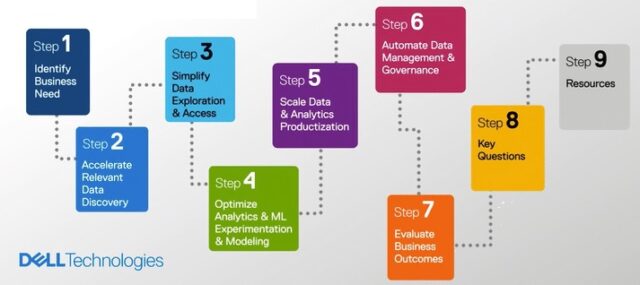Artificial intelligence (AI) is the future of technology. It is quickly becoming infused into the very fabric of everyday life and already impacting nearly every industry and business function. It is one of the most innovative technologies ever conceived or built, and it will be essential to the innovations of today and tomorrow. In a sense, AI is at the heart of innovation. And just like the heart needs oxygen and good blood flow, AI engines need a steady stream of clean and accurate data. The key to unlocking this is modern data management.
For example, take AeroFarms, a world leader in indoor farming and sustainable agriculture. AeroFarms achieves 390 times greater productivity annually than a commercial field farm while using 95 percent less water. Before having a holistic data management strategy in place, AeroFarms was harvesting plants without adequately harvesting valuable data that would yield better results. So, the company partnered with Dell to put their data to work to drive better performance.
The Dell Data Management Journey Map is comprised of seven key data and analytic outcomes that we believe are critical in accelerating an organization’s journey from business need to business outcome. In this blog post, we’ll introduce each of these seven key data and analytic outcomes, then explore each in greater detail in future blogs posts.
The Data Management Journey Map
Step 1: Identify and Triage Business Need. Managing massive data sources is pushing CIOs and their teams to the brink. Organizations should begin by understanding and identifying business and operational objectives. This first step sets the framework for understanding where and how the organization will derive business and operational value from their data, so they can then identify key business initiatives, challenges, KPIs and metrics against which to measure value creation effectiveness.
Step 2: Accelerate Relevant Data Discovery. Seeking, accessing and manually preparing data delays the discovery of pertinent analytics insights that are necessary to drive quantifiable business value. Users can accelerate this process by automatically populating catalogs from metadata on distributed sources. It frees up the organization’s ability to find relevant data for the problem they are trying to address.
Step 3: Simplify Data Access and Exploration. One of the keys to exploiting the unique economic characteristics of data – which is that it never wears out, it never depletes and the same data set can be used by an unlimited number of use cases – is the ability to simplify accessing and exploring the data no matter where it might reside. The need to first centralize data is no longer viable in a multicloud world where the volume of data at the edges of the organization is growing astronomically. To simplify data access and exploration, organizations need to embrace and activate data silos through data virtualization and support real-time data ingest and inferencing at the edges of the organization.
Step 4: Optimize Analytics Experimentation and Modeling. Each Data Science team needs an environment that allows them to quickly access and integrate a wide variety of data sources as they try to find those features that are better predictors of performance. Speed of experimentation is critical to support the data science team’s need to test different data enrichment techniques and try a variety of analytic algorithms in search for those predictive features. Sharing such features across data engineering, data science and business management accelerates the model development process and drives more innovation for each organization.
Step 5: Scale Data and Analytics Productization. Distributed data silos lead to isolated insights that can inhibit innovation and data value creation. Therefore, it’s critical to establish a modern data ingestion process where data can be accessed, used and analyzed across silos. This includes the operationalization of the supporting data pipelines, data transformation processes and the machine learning models that enable the delivery of key business and operational outcomes.
Step 6: Automate Data Management and Governance. The rapid growth of low-latency data at the edge due to the Internet of Things (IoT) is exacerbating the data management problem. Organizations must create a holistic view of the key data sources to monitor the heartbeats of the data systems and be able to revolve issues in production quickly. Automation of the data management and data governance processes is critical to support analytics scaling. This includes key data management capabilities to continuously monitor, flag and diagnose data quality and data security issues.
Step 7: Learn from Business Outcomes. Chief data officers and chief analytics officers are being challenged to unleash the business value of their data. Given data’s importance and the central role AI will play in helping mankind achieve a higher standard of living, as leaders, we have the opportunity to make the most from our data management capabilities. This will enable our teams and workforce to continue innovating, even during uncertain times. There has never been a better time to optimize data to create impactful outcomes. With the right data management strategy in place, we will see revolutionary innovation across industries for years to come.
Let Dell Data Management Lead the Way
Leading organizations are quickly realizing high-quality, accurate, complete and ethical data is fundamental to enabling their AI-driven applications. As data management is quickly transitioning from a technology practice to a critical business discipline, we in the Dell Data Management product team invite you to explore the interactive data management journey above, and to follow us throughout the year as we release a series of blog posts designed to guide organizations on their data management journeys. You can access the interactive data management journey infographic here.



